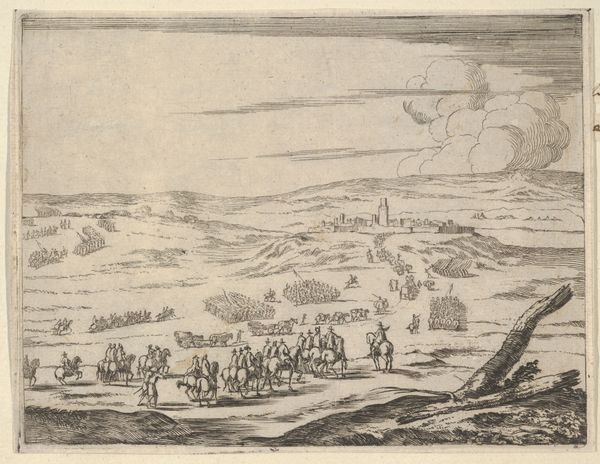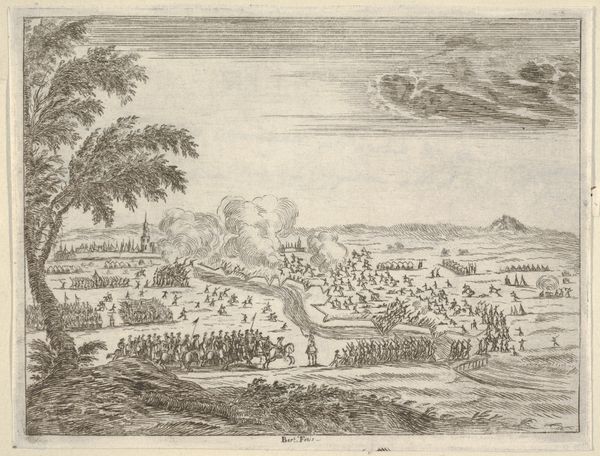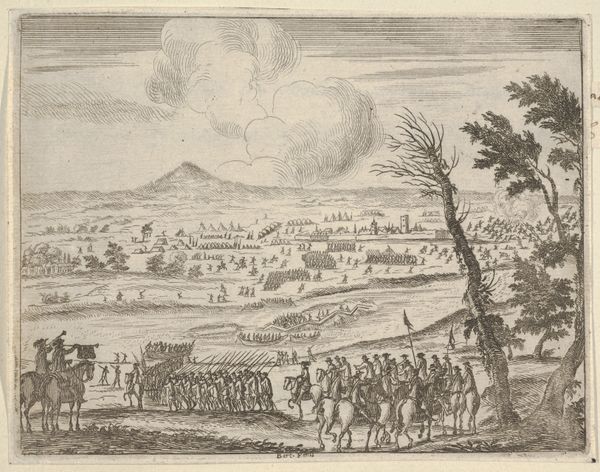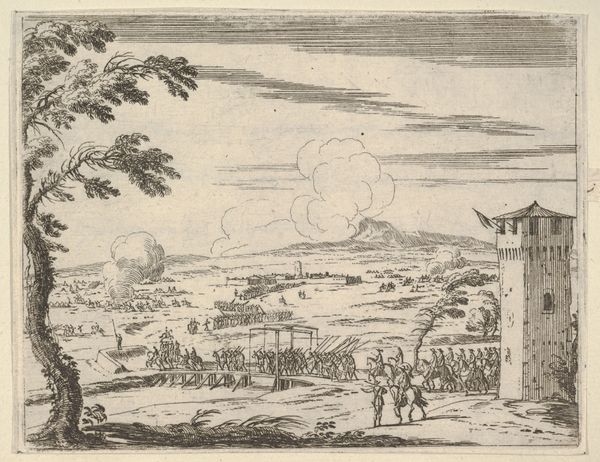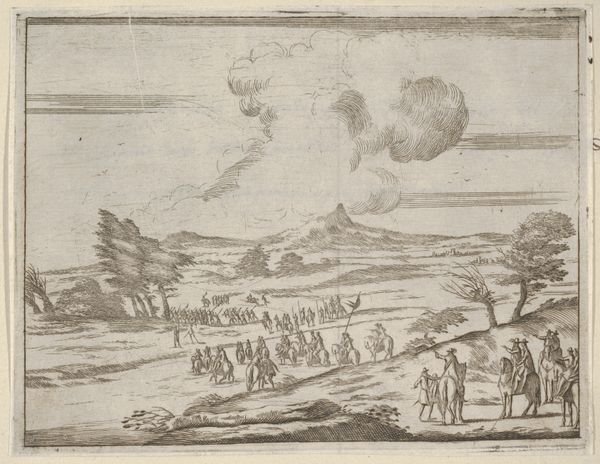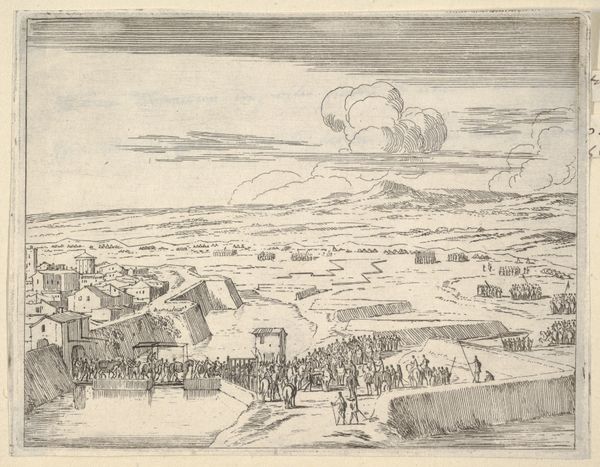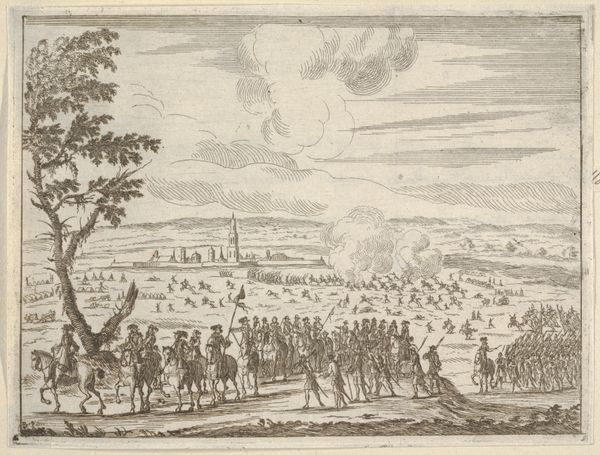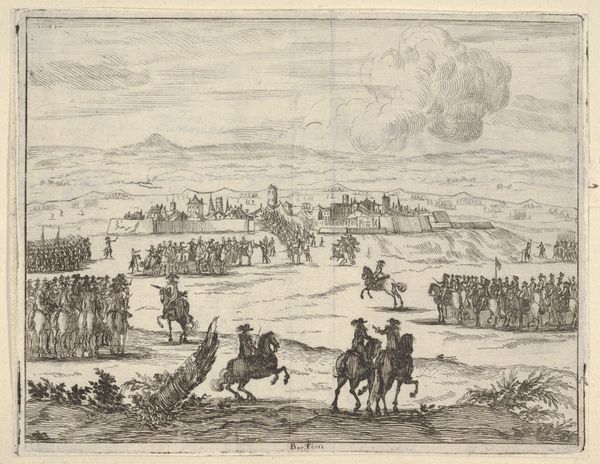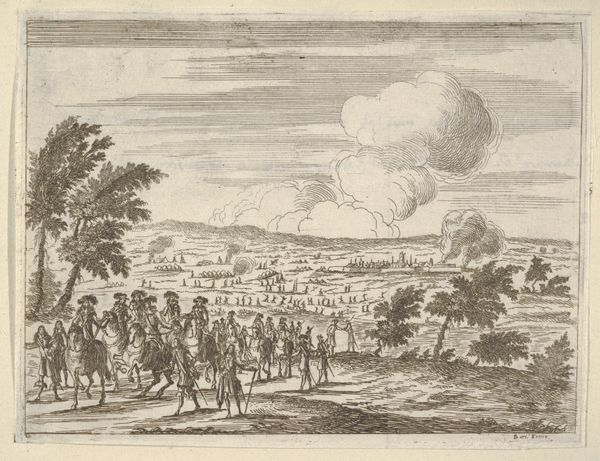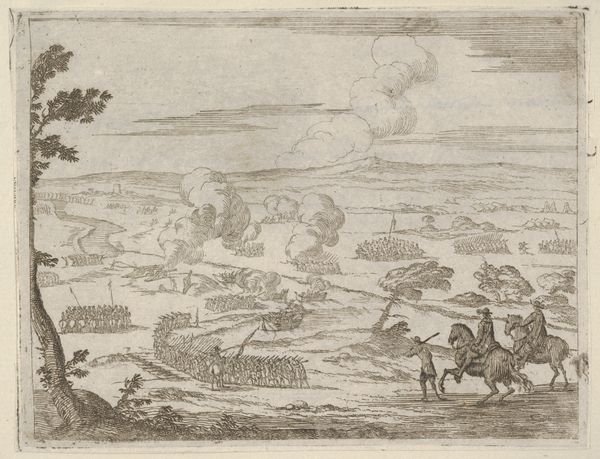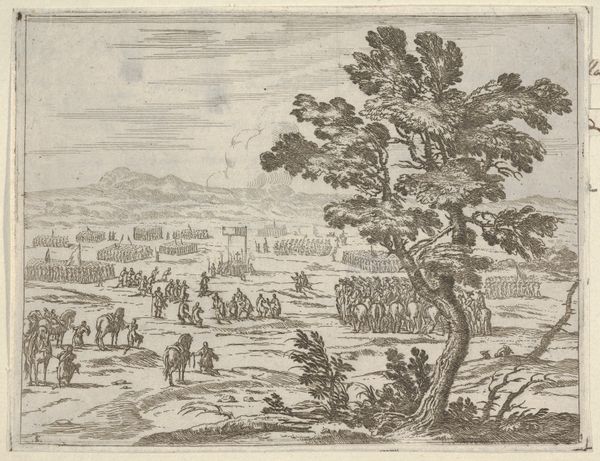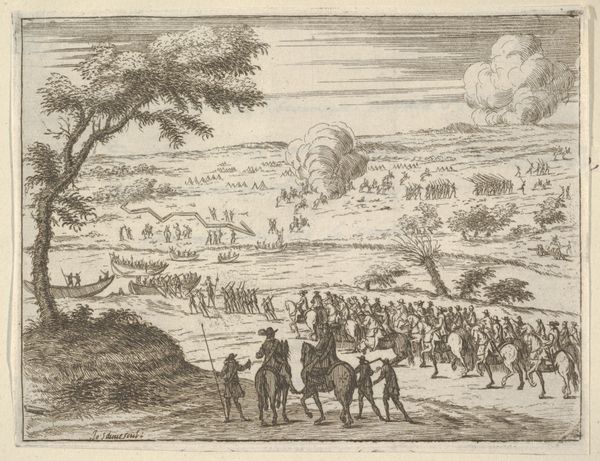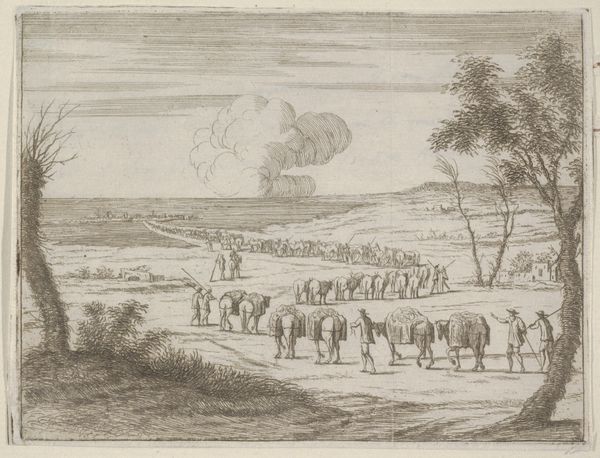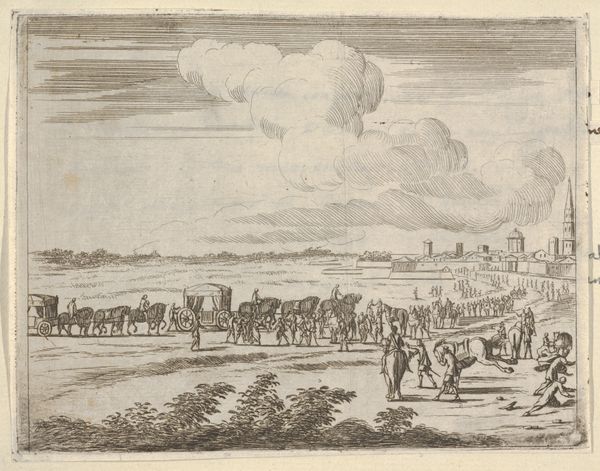![The Seige of Alessandria Begins, from L'Idea di un Principe ed Eroe Cristiano in Francesco I d'Este, di Modena e Reggio Duca VIII [...] by Bartolomeo Fenice (Fénis)](/_next/image?url=https%3A%2F%2Fd2w8kbdekdi1gv.cloudfront.net%2FeyJidWNrZXQiOiAiYXJ0ZXJhLWltYWdlcy1idWNrZXQiLCAia2V5IjogImFydHdvcmtzL2Q0M2UxMjhlLTQ3N2EtNDdmMS1iYzQ1LTZkOTA4MDZjYWQ3OC9kNDNlMTI4ZS00NzdhLTQ3ZjEtYmM0NS02ZDkwODA2Y2FkNzhfZnVsbC5qcGciLCAiZWRpdHMiOiB7InJlc2l6ZSI6IHsid2lkdGgiOiAxOTIwLCAiaGVpZ2h0IjogMTkyMCwgImZpdCI6ICJpbnNpZGUifX19&w=3840&q=75)
The Seige of Alessandria Begins, from L'Idea di un Principe ed Eroe Cristiano in Francesco I d'Este, di Modena e Reggio Duca VIII [...] 1659
0:00
0:00
drawing, print, engraving
#
drawing
#
baroque
# print
#
landscape
#
soldier
#
horse
#
cityscape
#
history-painting
#
engraving
Dimensions: Sheet: 4 13/16 × 6 7/16 in. (12.3 × 16.3 cm)
Copyright: Public Domain
Editor: So, this is Bartolomeo Fenice’s “The Siege of Alessandria Begins,” created in 1659. It’s an engraving. The scene depicts what looks like a military siege, with plumes of smoke rising above a walled city. The sheer labor that must have gone into creating this kind of detailed print is staggering. What are your thoughts when you see it? Curator: As a materialist, I'm drawn to understanding the labor and social conditions embedded in this image. Engravings like this were essentially mass media of their time. Think about the division of labor—the artist who designs the image, the engraver who painstakingly cuts the plate, the printers pulling impressions. And then, consider the social context. What purpose did these images serve, and for whom were they intended? Was this a commemorative piece? A propaganda tool? Editor: That's interesting. I was so focused on the historical depiction, I hadn’t considered how this was made and circulated. Who do you think would have bought something like this? Curator: Likely the nobility, or those aligned with them. These prints helped construct and disseminate a particular view of power, valorizing military achievements, and the ruling class's role in them. Consider how the medium itself, the repeatable print, facilitated the spread of these ideologies. Notice, also, the sheer quantity of labor expended in the manufacturing of the print; it speaks to available resources of the state and the ambitions of the ruling class. Editor: I see what you mean. It's not just a historical scene but a record of social and economic forces at play. The making of the art itself is deeply tied into this grand historical narrative. Curator: Precisely. By analyzing the material conditions of production and consumption, we can unpack the layers of meaning embedded in this seemingly straightforward depiction of a siege. The "high art" of the print is inseparable from the labor and social context that brought it into being. Editor: Thank you. Now I'm also thinking about the physical act of creating so many impressions. Curator: Yes! We have peeled back the historical context while also acknowledging the materiality that speaks to labor, manufacture, and purpose.
Comments
No comments
Be the first to comment and join the conversation on the ultimate creative platform.
